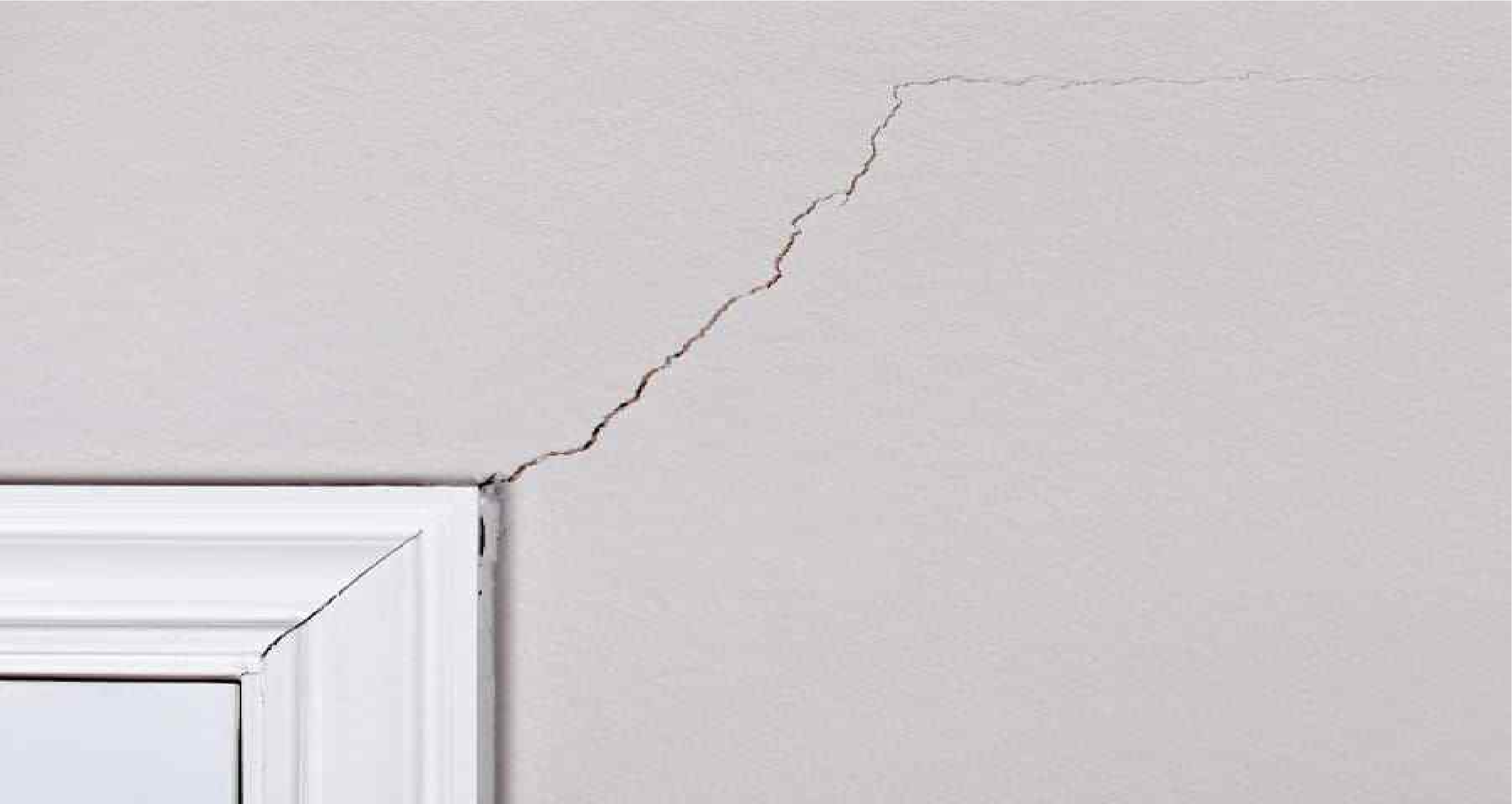
Building Crack Heal Specialization
- Category: Residential
- Date: 05-09-2017
Smaller cracks are generally nothing to worry about, however wider cracks, ones that run over doorways or those that run diagonally instead of vertically may be signs that something more serious is happening.
The cracks are wide
Hairline cracks of less than one millimetre in width or slight cracks of between one and five millimetres are generally not a cause for concern. If you begin to notice these, they can generally be filled and painted over as they’re a crack in the plaster but not in the wall itself.
A crack is more serious when it’s between five and 15 millimeters wide (0.5 to 1.5 centimeters, or up to half an inch) as the cause could be more serious than simply dried out plaster or a house that is settling. A damaged wall would be considered severe when it’s 25 millimeters or wider (2.5 centimeters or one inch) as it could be a sign of structural damage, subsidence (the sudden sinking of a house and its foundations) or something else. A crack this big could result in the building needing serious work, such as underpinning, to ensure it is stable.
1. Normal Settling Over Time
As a house ages, homeowners can expect some normal wear and tear, including some minor settling. When this happens, you may notice hairline cracks over doors and windows.
Why it happens:
In a nutshell, it happens because things move. The ground beneath your foundation tends to shift slightly with changes in weather. These tiny movements aren’t dangerous, but they can lead to small, non-damaging cracks in the weak spots in your walls—the places where doors and windows have been inserted.
What to do:
Thin cracks in just a few places above doors and windows can be re-taped and painted to restore your home’s aesthetics. But if you notice a lot of cracks, deeper cracks, or other concerns, talk with a foundation repair company for advice.
2. A New Build
If your home was built within the last few years, it’s very likely that you may notice some small wall cracks showing up.
Why it happens:
Because it is so fresh, new lumber typically contains a high amount of moisture. As it dries out, it tends to shift a bit. This slight movement can cause small cracks in a home’s walls, typically at the joints where sheets of drywall meet.
What to do:
These small cracks are likely nothing to worry about. But it’s a good idea to wait for your home to be at least a year old before you address them. Waiting gives the wood time to dry completely and finish its minor settling. At that point, you can re-tape the cracked drywall joints and repaint.
Need help knowing the signs of foundation problems? Our “Photo Guide to Common Foundation Problems” is a great place to start.
3. Home Left Vacant
Is your home often vacant—perhaps because it is a vacation home, a rental property, or a new home that was on the market for a while before you bought it? If so, you may see cracks appearing in walls and ceilings.
Why it happens:
Regular, reliable climate control does more for your home than making it comfortable for you; it also keeps your drywall in good shape. When a home is left vacant, the lack of climate control can cause drywall cracks.
What to do:
A cosmetic issue, these cracks can usually be handled by re-taping drywall joints and repainting. But if a home has been empty for a very long time, a thorough inspection from top to bottom, including a professional foundation inspection, is a smart idea.
4. Faulty Taping of Drywall
Sometimes, home builders aren’t as careful as they could be. So, if you are in a new home or if you’re seeing cracks in the walls of a home addition you’ve recently had done, it’s possible they are the result of inferior drywall installation.
Why it happens:
During installation, drywall panels are joined at the seam by what is known as drywall mud. The seam is then covered with paper tape, and the wall is then finished and painted. If the seam isn’t sufficiently filled and sealed, the tape will start to pull away, leaving a thin crack as evidence of the problem.
What to do:
Add a little household glue to the back of the tape and press it back into place. If the problem is widespread, you may have to re-tape all the seams to eliminate the issue completely.
5. A Leak
If the cracks in your walls are showing discoloration, such as brown or yellow tinted stains, then the problem may be the result of water damage to your home.
Why it happens:
Leaky windows and roofs can cause moisture to get into your home’s walls. This causes the drywall to get wet, soften, and deteriorate, which then leads to cracking.
What to do:
Before you do anything else, find the source of the leak and repair it. Once repairs are complete and there’s no chance of additional moisture damage, you can replace the damaged drywall.
6. Foundation Damage
Unfortunately, cracking in your walls and ceilings may also be the result of damage to your foundation. If you’re seeing large cracks that are more than a quarter-inch wide or other signs that have you concerned about your foundation, it’s definitely time to have your home checked.
Why it happens:
There are a number of causes of foundation issues, including clay, the most common soil composition in Oklahoma, inferior construction, water damage to the foundation slab, and even termite damage.
What to do:
To preserve your home’s structural integrity and value, foundation issues should be addressed by a professional. Have a foundation inspection and any needed repairs performed as soon as possible to prevent the problems from worsening.
